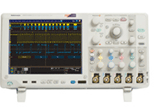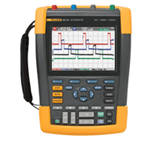Test time-varying currents or signals with oscilloscopes, which measure and observe changes in these electronic currents. The display on the instrument shows variations in currents from small to very large. For critical equipment and processes that rely on consistent signals, a well-functioning oscilloscope is a necessary troubleshooting instrument.
Engineers, physicists, research scientists, mechanics, electronic technicians, and even health care workers use oscilloscopes for different purposes. Electronic design teams and test teams in the semiconductor, aerospace, and wireless industries employ these scopes to debug designs.
According to Fluke, “any number of factors can lead to spurious signals that may cause equipment to suddenly drop out for no apparent reason. Some of these are equipment related, for example, defective circuitry, dry solder joints, dust or corrosion and overheating. Others such as main fluctuations and voltage spikes due, for example, to airco systems switching on, are related to the mains supply.”
Begin tracing the source with electronic test equipment such as benchtop or handheld oscilloscopes. Portable oscilloscopes now combine rugged portability with the performance of bench models. Measure input, output, and feedback signals to diagnosis the electronics. To keep your production powered and running properly, make sure your oscilloscopes and other test equipment are themselves taking accurate readings by maintaining regular calibration intervals.
InnoCal can calibrate oscilloscopes up to 1.1 GHz. We also offer electronic calibration capabilities such as AC – DC Low Voltage, High Voltage and Resistance and Temperature Simulation.